- Introduction
- How We Picked the Books
- Top 10 Reference Books for Electrical Engineers
- 1. The Art of Electronics – Paul Horowitz and Winfield Hill
- Strengths/Weaknesses
- Why Is This Book an Essential Reference for Electrical Engineers?
- 2. Electrical Engineering 101 – Darren Ashby
- Strengths/Weaknesses
- Why Is This Book an Essential Reference for Electrical Engineers?
- 3. Microwave Engineering – David M. Pozar
- Strengths/Weaknesses
- Why Is This Book an Essential Reference for Electrical Engineers?
- 4. Practical Electronics for Inventors – Paul Scherz
- Strengths/Weaknesses
- Why Is This Book an Essential Reference for Electrical Engineers?
- 5. Fundamentals of Applied Electromagnetics – Fawwaz Ulaby and Umberto Ravaioli
- Strengths/Weaknesses
- Why Is This Book an Essential Reference for Electrical Engineers?
- 6. Solid State Electronic Devices – Ben Streetman and Sanjay Kumar Banerjee
- Strengths/Weaknesses
- Why Is This Book an Essential Reference for Electrical Engineers?
- 7. Modern Control Systems – Richard Dorf and Robert Bishop
- Strengths/Weaknesses
- Why Is This Book an Essential Reference for Electrical Engineers?
- 8. Engineering Circuit Analysis – William Hayt, Jack Kemmerly, Jamie Phillips, and Steven Durbin
- Strengths/Weaknesses
- Why Is This Book an Essential Reference for Electrical Engineers?
- 9. Instrumentation and Measurement in Electrical Engineering – Roman Malarić
- Strengths/Weaknesses
- Why Is This Book an Essential Reference for Electrical Engineers?
- 10. Antenna Theory: Analysis and Design – Constantine A. Balanis
- Strengths/Weaknesses
- Why Is This Book an Essential Reference for Electrical Engineers?
- Don’t Just Read About It; Experience It! Use Keysight’s State-of-the-Art Test Equipment and Put Your Knowledge Into Practice!
- Whenever You’re Ready, Here Are 4 Ways We Can Help You
They say that knowledge is power, and this statement couldn't be more accurate when it comes to electrical engineering. The field of electrical engineering is constantly evolving, and staying current with the latest advancements and technologies is crucial for your success as an engineer. Reading books is an effective way for you to acquire knowledge, hone your skills, and develop a deep understanding of your field.
Through books, you can learn about the fundamental principles of electrical engineering and gain insights into the practical applications of these principles. Books can also provide in-depth coverage of specialized topics and emerging areas of research, which can be valuable if you are looking to stay ahead of the curve.
These books also provide a reliable source of information that you can reference throughout your career. When faced with a challenging problem, you can turn to these reference books for guidance, helping you develop effective solutions.
Let's review 10 of the best electrical engineering reference books to help you expand your knowledge and better understand the field.
How We Picked the Books
The books included in this roundup have been carefully selected based on several important criteria essential for electrical engineers. These criteria include relevance, accuracy, clarity, scope, depth, organization, authoritativeness, and popularity.
| Criteria | Reasoning |
|---|---|
| Relevance | The books included in this roundup are highly relevant to electrical engineering and cover a wide range of topics essential for engineers to know. |
| Accuracy | Electrical engineering is a highly technical field, and the information provided in these reference books must be accurate and up-to-date. These ten books are written by experts in the field, so you can trust their accuracy. |
| Clarity | Electrical engineering can be a complex and technical subject, so the information provided must be presented in a clear and understandable manner. The books in this roundup are known for their clarity and ability to communicate complex concepts in an accessible way. |
| Scope | Electrical engineering is a broad field, so reference books must cover various topics. The books in this guide have comprehensive coverage of various electrical engineering fields. |
| Depth | Reference books must provide in-depth coverage of critical concepts and technologies. The books you will find here are well known for their depth of coverage and ability to provide a deep understanding of different aspects of electrical engineering. |
| Organization | Electrical engineering can be hard to follow for those new to the field, so you want well-organized and easy-to-navigate reference books. The books in this guide are clearly written and have a logical flow. |
| Authoritativeness | Since electrical engineering is a highly technical field, it is vital that writers are in the field. The books chosen below are well known for their authoritativeness and the expertise of their authors, often with decades of experience in the field. |
| Popularity | While popularity should not be the only factor in selecting reference books, it is a handy indicator of their usefulness and value to the particular field. The ten books you will find listed are popular among electrical engineers and are known for their reputation as must-read texts. |
Top 10 Reference Books for Electrical Engineers
- The Art of Electronics – Paul Horowitz and Winfield Hill
- Electrical Engineering 101 – Darren Ashby
- Microwave Engineering – David M. Pozar
- Practical Electronics for Inventors – Paul Scherz
- Fundamentals of Applied Electromagnetics – Fawwaz Ulaby and Umberto Ravaioli
- Solid State Electronic Devices – Ben Streetman and Sanjay Kumar Banerjee
- Modern Control Systems – Richard Dorf and Robert Bishop
- Engineering Circuit Analysis – William Hayt, Jack Kemmerly, Jamie Phillips and Steven Durbin
- Instrumentation and Measurement in Electrical Engineering – Roman Malaric
- Antenna Theory: Analysis and Design – Constantine A. Balanis
1. The Art of Electronics – Paul Horowitz and Winfield Hill
Released in 2015, the 3rd edition of the Art of Electronics by Paul Horowitz and Winfield Hill is an exceptional book that is an excellent resource for both novice and experienced electronic engineers. It is known for its comprehensive coverage of electronics, ranging from basic principles to advanced techniques.
Horowitz and Hill present the material in an intuitive and accessible manner that makes it easy for readers to understand and apply. The book's content is practical and includes many real-world examples illustrating the discussed concepts.
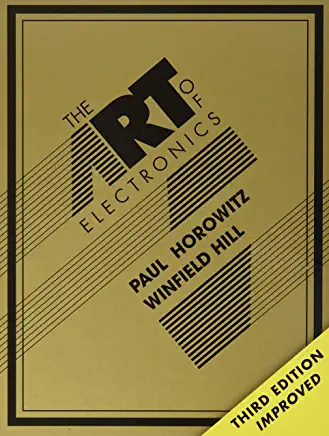
Strengths/Weaknesses
One of the book's most notable features is its emphasis on circuit design. The authors cover a range of circuit design techniques, providing valuable insights into the design process. Additionally, the book covers various topics, including analog and digital electronics, signal processing, and microcontrollers.
Another notable feature of The Art of Electronics is its clear and concise explanations. The authors use straightforward language and avoid technical jargon, making it easy to follow.
One weakness of the book is its lack of coverage of advanced topics. However, this should still be ok for new engineers, who will benefit from the book's comprehensive range of fundamental electronics concepts.
Overall, The Art of Electronics is an excellent reference book covering various topics related to electrical engineering. The book's layout is well-designed, with plenty of illustrations and diagrams that help to clarify complex concepts!
Why Is This Book an Essential Reference for Electrical Engineers?
The Art of Electronics is a must-have for any electrical engineer.
- The book provides an in-depth and accessible understanding of the different aspects of electronics.
- It offers clear explanations and practical examples, making it an invaluable resource for anyone looking to understand this complex field better.
- Its emphasis on circuit design makes it particularly useful if you want to develop your skills in this area.
The Art of Electronics is an essential reference book for any electrical engineer and is widely known as one of the best authoritative books on electronic circuit design.
2. Electrical Engineering 101 – Darren Ashby
Electrical Engineering 101 by Darren Ashby is a comprehensive guide to the fundamental concepts and principles of electrical engineering. His 3rd edition was written in 2011 and is an excellent resource for beginners and students looking for a solid understanding of the subject.
Ashby has written the book clearly and concisely, making it easy to understand even for those with no prior knowledge of electrical engineering. The book covers various topics, including electric circuits, power systems, electromagnetics, and electronics.
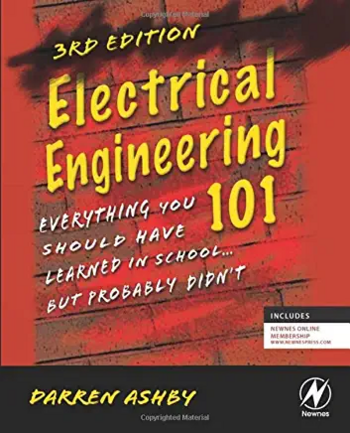
Strengths/Weaknesses
One of the strengths of the book is its practical approach to learning. Ashby has included many real-world examples and applications of electrical engineering concepts, which helps readers see the subject's relevance and usefulness.
Another noteworthy feature of the book is its use of simple and intuitive explanations, which make complex concepts much easier to understand. Numerous illustrations, diagrams, and equations help reinforce the ideas presented in the text.
This book may not be the best choice for engineers looking for advanced or specialized topics. Additionally, some of the explanations may be too simplistic for experienced engineers who already have a good grasp of the fundamentals.
Why Is This Book an Essential Reference for Electrical Engineers?
Electrical Engineering 101 is invaluable for anyone wanting a deeper understanding of electric circuits, power systems, electromagnetics, and electronics.
With its clear explanations, practical examples, and intuitive illustrations, you will be on your way to mastering the fundamentals of electrical engineering in no time. All in all, this book is an essential reference for any aspiring electrical engineer!
3. Microwave Engineering – David M. Pozar
Released in 2011, the 4th edition of Microwave Engineering by David M. Pozar is an in-depth textbook looking at the principles and applications of microwave engineering. Whether you are an undergraduate, graduate student, or engineer, this book will greatly benefit anyone wanting to expand their microwave technology knowledge.
The book begins with an introduction to microwave engineering, followed by a review of electromagnetic and transmission line theories. Pozar then covers various microwave components, including microwave resonators, filters, amplifiers, and oscillators. The book also includes chapters on microwave antennas and radiation and microwave measurement techniques.
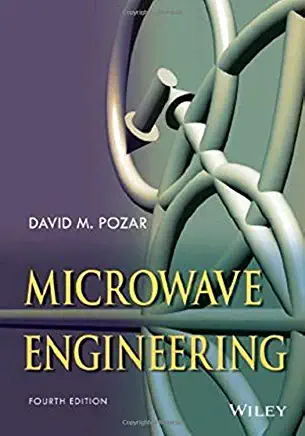
Strengths/Weaknesses
One of the strengths of this book is its clear and concise writing style. Pozar presents complex concepts in a straightforward manner, making them easy to follow and understand. The book is also well-organized, with each chapter building on the previous one and each topic presented logically.
Another strength of Microwave Engineering is its use of practical examples and real-world applications. Pozar includes numerous examples of microwave circuits and systems, and the book also includes many practical design problems and exercises. This approach makes the book useful for students who want to apply the concepts they learn to real-world problems.
However, the book does assume a strong foundation in mathematics, including differential equations, vector calculus, and complex analysis. If you are unfamiliar with these topics, you may find the book challenging to follow.
Why Is This Book an Essential Reference for Electrical Engineers?
Pozar does an excellent job of covering the fundamentals and applications of microwave engineering. This book is an essential reference for engineers looking to better understand microwaves and their use in communication systems.
It also provides valuable insight into the design and analysis of microwave components, making this 4th edition a must-have resource for any electrical engineer.
4. Practical Electronics for Inventors – Paul Scherz
Published in 2016, the 4th edition of Practical Electronics for Inventors by Paul Scherz and Simon Monk is an excellent resource for anyone interested in learning about the basics of electronics. Whether you are a hobbyist, student, or professional, this book provides a comprehensive and practical guide to electronics that is easy to read and understand.
The book is divided into four parts, covering broad aspects of electronics.
- Part 1 introduces the basics of electronics, including electrical quantities and circuits, semiconductors, and diodes.
- Part 2 covers amplifiers, transistors, and operational amplifiers.
- Part 3 discusses digital electronics, including logic gates, flip-flops, and registers.
- Part 4 covers power supplies, voltage regulators, and other general topics.
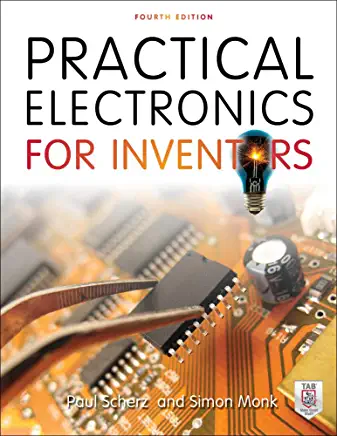
Strengths/Weaknesses
The biggest strength of this book is its clear and concise writing style, which makes even the most complex topics easy to understand. Each chapter is well-organized, with plenty of examples and excellent illustrations to help illustrate the discussed concepts. Additionally, the book includes various practical projects you can build yourself, which is a great way to apply the knowledge learned.
One downside may be that some of the topics covered in this book may be too advanced for beginners. But if you want to persevere, Scherz and Monk do an excellent job of breaking down the topics and explaining them in simple terms, so even those who are just starting in engineering should be able to follow.
Why Is This Book an Essential Reference for Electrical Engineers?
Practical Electronics for Inventors is an essential resource whether you're an amateur hobbyist, student, or professional engineer. This book provides all the vital tools and knowledge needed to understand the fundamentals of electronics and practically apply them. This book offers a complete understanding of electronics with clear explanations and excellent illustrations.
5. Fundamentals of Applied Electromagnetics – Fawwaz Ulaby and Umberto Ravaioli
Fundamentals of Applied Electromagnetics by Fawwaz Ulaby and Umberto Ravaioli provides a detailed introduction to the principles of electromagnetics. This 7th edition, published in 2014, is a great tool for undergraduate students in electrical engineering and other fields such as physics and computer engineering.
The book is divided into 12 chapters and covers topics such as
- Static electric and magnetic fields
- Time-varying fields and Maxwell's equations
- Plane waves
- Transmission lines
- Waveguides
- Antennas
Ulaby and Ravaioli take a rigorous approach to the subject matter, providing numerous examples and problems to help you grasp the concepts and apply them to real-world situations.
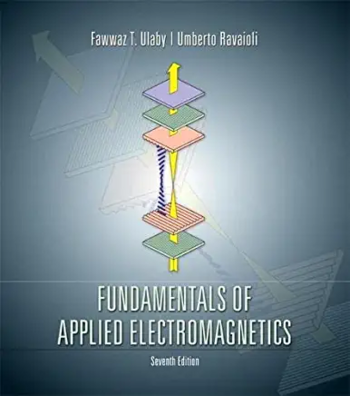
Strengths/Weaknesses
One of the book's strengths is its clear and concise writing style. Ulaby and Ravaioli explain complex concepts in a way that is easy to understand, and they use various analogies and visual aids to help illustrate critical ideas. In addition, the book has many figures and diagrams that help you visualize electromagnetic phenomena and better understand the concepts.
Why Is This Book an Essential Reference for Electrical Engineers?
This 7th edition textbook has earned praise both in the US and abroad for providing a comprehensive overview of circuits and new electromagnetics concepts. It takes readers on an exploration from familiar concepts to more advanced topics; the book is an asset for any engineer with user-friendly approaches, full-color figures, real-life simulations, and accompanying images.
6. Solid State Electronic Devices – Ben Streetman and Sanjay Kumar Banerjee
Solid State Electronic Devices is the 7th edition, published in 2016 by Ben Streetman and Sanjay Kumar Banerjee. The book is an excellent resource for anyone interested in electronic devices and semiconductor technology.
The book is well-organized and covers semiconductor physics, p-n junctions, metal-semiconductor contacts, bipolar junction transistors, field-effect transistors, and optoelectronic devices. Streetman and Sanjay have explained these complex concepts clearly and concisely, making the book accessible to both students and engineers.
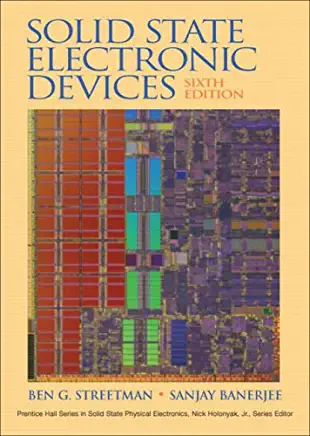
Strengths/Weaknesses
One of the strengths of this book is the numerous examples and problems at the end of each chapter. These allow you to practice and apply the concepts you have learned in each chapter. With its many illustrations and diagrams, the book also provides a visual approach to grasping the material.
Another strength of this book is that it covers current developments in the field, including topics such as nanotechnology and quantum devices. The authors also provide a historical perspective on the evolution of solid-state electronic devices, which gives the reader a better appreciation of the significance and impact of these devices on modern technology.
Why Is This Book an Essential Reference for Electrical Engineers?
For engineers working in the field of electronics, Solid State Electronic Devices is an essential resource. The book offers a comprehensive overview of the principles and applications of semiconductor devices, from basic concepts to modern developments.
This breakdown of the material makes it an excellent resource for students and professionals to better understand the inner workings of electronic devices.
7. Modern Control Systems – Richard Dorf and Robert Bishop
Published in 2013, Modern Control Systems by Richard Dorf and Robert Bishop is the 13th edition looking at the principles of control systems. The book provides a thorough and detailed introduction to the fundamentals of control systems, covering topics ranging from modeling and analysis to design and implementation.
The book is divided into 15 chapters, each covering a specific aspect of control systems. The first few chapters introduce the basic concepts of control systems, such as modeling, feedback, and stability. Dorf and Bishop then delve into the different types of control systems, such as digital and analog systems, and explain their respective advantages and disadvantages.
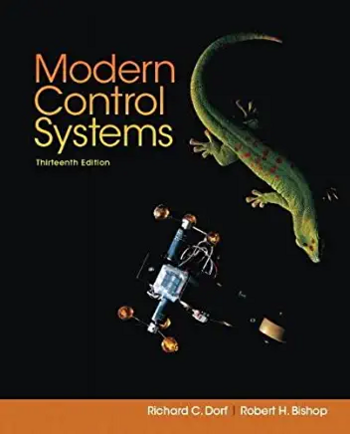
Strengths/Weaknesses
One of this book's best features is its sheer number of problem sets and examples. With these examples, you can better understand the concepts you are learning and apply them to real-life situations. The authors also provide detailed explanations for each instance, which makes it easier for readers to understand each concept.
Another strength of this book is its use of modern technology. The authors provide examples that involve using MATLAB, Simulink, and Laboratory Equipment to demonstrate control system principles and techniques. This helps readers better understand control systems by seeing them in action.
Why Is This Book an Essential Reference for Electrical Engineers?
Almost every engineer will use control systems in their projects and designs at some point. Modern Control Systems give engineers a comprehensive overview of the principles and techniques used to design, analyze, and implement control systems. With its well-organized chapters and numerous examples, this book is an essential reference for any engineer looking to further their knowledge in this field.
8. Engineering Circuit Analysis – William Hayt, Jack Kemmerly, Jamie Phillips, and Steven Durbin
Engineering Circuit Analysis by William Hayt, Jack Kemmerly, Jamie Phillips, and Steven Durbin is a widely-used textbook in the field of electrical engineering. The book provides essential circuit analysis concepts, starting with basic principles and progressing to advanced topics.
Published in 2018, the 9th edition book is divided into several chapters, each covering a specific topic. The first chapter introduces the basic concepts of circuit analysis, such as voltage, current, resistance, power, and energy.
The second chapter covers the basic laws of circuit analysis, including Ohm's law, Kirchhoff's laws, and Thevenin's and Norton's theorems. The subsequent chapters delve deeper into circuit analysis techniques, including nodal analysis, mesh analysis, transient analysis, and frequency response.
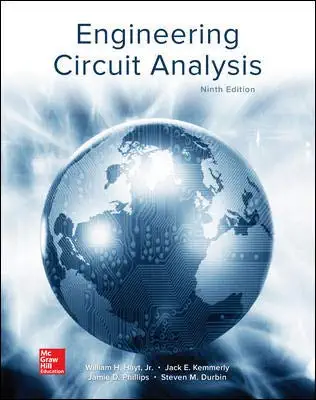
Strengths/Weaknesses
A standout feature of this book is its comprehensive coverage of circuit analysis techniques. The authors have included all the essential topics related to circuit analysis, from basic principles to advanced topics. The book covers phasor analysis, Laplace transforms, Fourier series, and filter design.
The book also uses numerous diagrams, equations, and examples to illustrate each concept. These visuals allow readers to imagine the concepts they are learning and understand them in greater depth.
Why Is This Book an Essential Reference for Electrical Engineers?
While some textbooks boast a comprehensive coverage of circuit analysis principles, Engineering Circuit Analysis is unique because it provides the necessary tools and equations to design circuits.
This feature makes it an essential reference for electrical engineers wanting a deeper understanding of circuit analysis. With its clear explanations and numerous diagrams, this book will help any engineer to master circuit design fundamentals.
9. Instrumentation and Measurement in Electrical Engineering – Roman Malarić
Instrumentation and Measurement in Electrical Engineering was published in 2012 by Roman Malarić. The book focuses on the principles of electrical instrumentation and measurement and is organized into 14 chapters that cover topics such as
- Measurement systems and instrumentation
- Fundamental principles of electrical measurements
- Measurement errors
- Digital instruments
- Signal processing
- Data acquisition systems
- Sensors
- Transducers
- Instrumentation amplifiers and more
The book also provides numerous examples and practical applications throughout the text. It includes exercises and problems at the end of each chapter to help you test your understanding of the material.
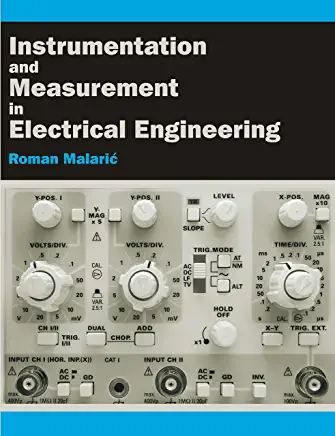
Strengths/Weaknesses
The book does an excellent job of taking your understanding of instrumentation and measurements from the basics to a more advanced level. It covers all major topics, such as signal processing, sensors, transducers, and data acquisition systems—the numerous examples throughout the text help to illustrate the principles discussed in each chapter.
The one downside is that it lacks some of the more advanced topics and trends in instrumentation and measurement without any updated editions.
Why Is This Book an Essential Reference for Electrical Engineers?
Knowledge can only get you so far. As an engineer, you need to be able to apply the principles you have learned. Instrumentation and Measurement in Electrical Engineering provides an invaluable resource for electrical engineers looking to master essential concepts in instrumentation and measurement.
With its clear explanations, examples, and problems, this book will help any engineer better understand instrumentation and measurements, allowing them to use that knowledge in real-world scenarios.
10. Antenna Theory: Analysis and Design – Constantine A. Balanis
Antenna Theory: Analysis and Design by Constantine A. Balanis looks at the principles, theory, and design of antennas. His 4th edition, published in 2015, is widely recognized as one of the most authoritative and valuable books on antennas, with a strong emphasis on practical applications and design techniques.
The book is organized into six parts.
- Part one introduces the fundamental concepts of antennas, electromagnetic theory, and radiation.
- Part two covers antenna types, including wire antennas, aperture antennas, reflector antennas, and array antennas.
- Part three focuses on antenna arrays, covering topics such as array factor and pattern synthesis, and then on to planar arrays, smart antennas, and broadband arrays.
- Part four delves into the analysis of transmission lines, including Smith charts and the reflection coefficient.
- Part five breaks down waveguides and horns.
- Finally, part six covers antenna measurements and design, including antenna testing, numerical techniques, and software tools for antenna design.
Balanis' writing style is clear, concise, and easy to follow, and the book is well-organized and includes numerous examples and exercises.
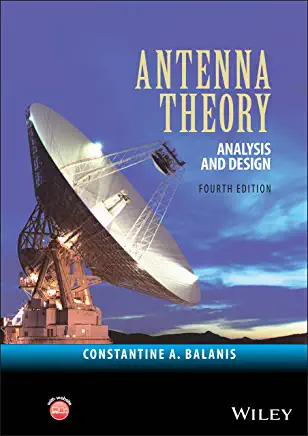
Strengths/Weaknesses
One of the book's strengths is its emphasis on practical applications and design techniques. Balanis provides detailed explanations of designing antennas for specific applications, such as communication, radar, and satellite systems. He also includes examples of practical design problems, such as the patch antenna design for a wireless LAN system.
Another strength of the book is its coverage of recent advances in antenna technology, such as smart antennas, broadband antennas, and fractal antennas. The reader will need a solid background in electromagnetic theory and mathematics, which may make it difficult to understand if you are new to the antenna field.
Why Is This Book an Essential Reference for Electrical Engineers?
Balanis' ability to break down the fundamentals and provide recent advances in antenna design makes it an excellent resource for electrical engineers looking to get a comprehensive understanding of antennas. Whether you're working on wireless communication, radar, or satellite systems, Antenna Theory: Analysis and Design won't disappoint.
Don’t Just Read About It; Experience It! Use Keysight’s State-of-the-Art Test Equipment and Put Your Knowledge Into Practice!
The chances are, as an engineer, you crave knowledge! That fact likely drove you into the engineering field in the first place. With Keysight test equipment, you can put your knowledge into practice with some of the most advanced, reliable, and accurate instruments on the market.
Right now, we are offering special deals on refurbished premium test equipment like Oscilloscopes, Signal Generators, Spectrum and Network Analyzers, and many more. These deals mean you can get a top-of-the-line instrument at a very reasonable price. So don't wait – Put your engineering expertise to the test and explore our range of used test equipment today!

Whenever You’re Ready, Here Are 4 Ways We Can Help You
- Browse our Used Equipment offers
- Call tech support US: 1 800 829-4444
Press #, then 2. Hours: 7am – 5pm MT, Mon– Fri - Talk to our sales support team by clicking the icon (bottom right corner) on every offer page
- Talk to your account manager for custom deals